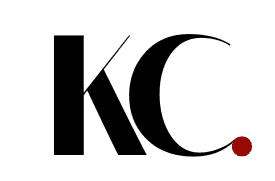
When Functions Meet Markets: Designing Conversations That Matter
This blog outlines how a company's choice of market logic shapes the way functional teams collaborate, aligning their expertise through critical connection points called "docking stations".
There’s a challenge that emerges specifically in functional organizations as they expand globally: how to preserve functional excellence while serving diverse markets. While global heads of Technology, Product, Supply Chain, Marketing, and Sales build deep expertise in their domains, now you're serving markets that require different price points, product features, and go-to-market strategies based on local consumer preferences and regulatory requirements.
Some companies address this challenge by switching to a geographic divisional structure. However, organizations that deliberately maintain a functional structure (like Apple and Spotify) do so to leverage specialized knowledge and build deep expertise. The key question becomes: how can these organizations preserve their functional strengths while successfully handling market diversity?
Three Strategic Decisions
The first choice is selecting the right market logic. Organizations need to determine how to segment their markets - a foundational choice that shapes how different functions come together to develop and execute market strategies. Some organizations find success with regional territories, particularly when managing across time zones and local operations is crucial. Others organize by language groups when content localization and cultural understanding drive their go-to-market strategy. Still others segment by market maturity levels when emerging and established markets require distinctly different approaches. The choice of market logic has far-reaching implications for how teams come together to translate strategy into action.
This is why copying another company's global organization rarely works. What looks like a simple choice between territory or language groupings actually shapes the entire rhythm and nature of how functional leaders work together. It determines who needs to be in the room for key decisions and what trade-offs they discuss. For example, with a territory-based approach, functional leaders might regularly meet to discuss performance and priorities specific to Asia Pacific or Europe. But with a market maturity approach, these same leaders would instead come together to discuss shared challenges across all growth markets - whether they're in Southeast Asia or Latin America - focusing on capability building and market development regardless of geography.
See below the options considered by a functionally organized, global media company:

The second key decision is determining which functions need high market differentiation. Functions like Sales and Marketing often benefit from local market understanding. These frequently require full-time "jobs" to manage each market group. Other functions like Technology and Product can often operate effectively through "second hat" responsibilities - where existing team members take on additional oversight for market-specific needs. Understanding which functions need dedicated market resources versus which can operate through shared responsibilities is crucial for resource allocation and structure design.
The last decision involves designing what we call "docking stations" - the interfaces where global functions connect across to execute market-specific operations. Effective interfaces typically follow several key principles. They match organizational levels across functions, so if Marketing connects to markets at the L3 director level, other functions align at the same level. They establish clear ownership and accountability on both functional and market sides. They maintain consistent meeting rhythms and communication protocols. Perhaps most importantly, they clearly define decision-making authority at each interface.

Organizations that thoughtfully sequence these elements can work toward balancing their functional expertise with market responsiveness. This isn't about following universal best practices, but rather working systematically through market logic, functional differentiation needs, and cross-functional connectivity. When these elements align well, organizations can maintain their functional strengths while adapting to diverse markets. Success requires ongoing attention to how these elements work together and willingness to adjust as market conditions change.

